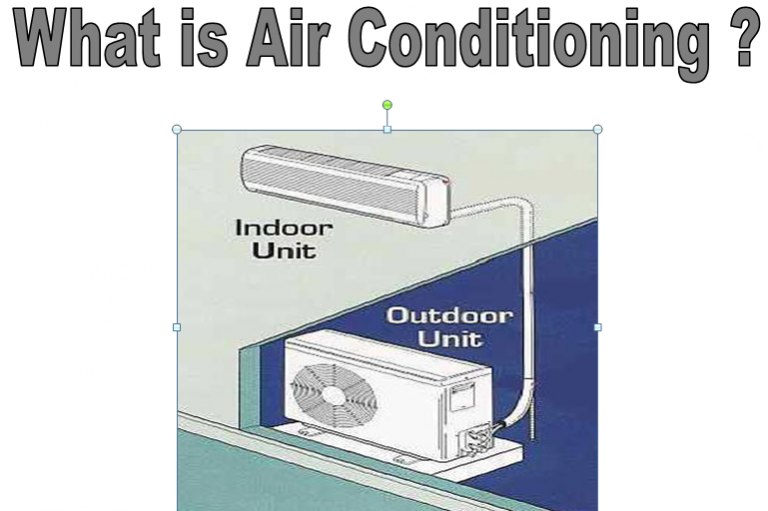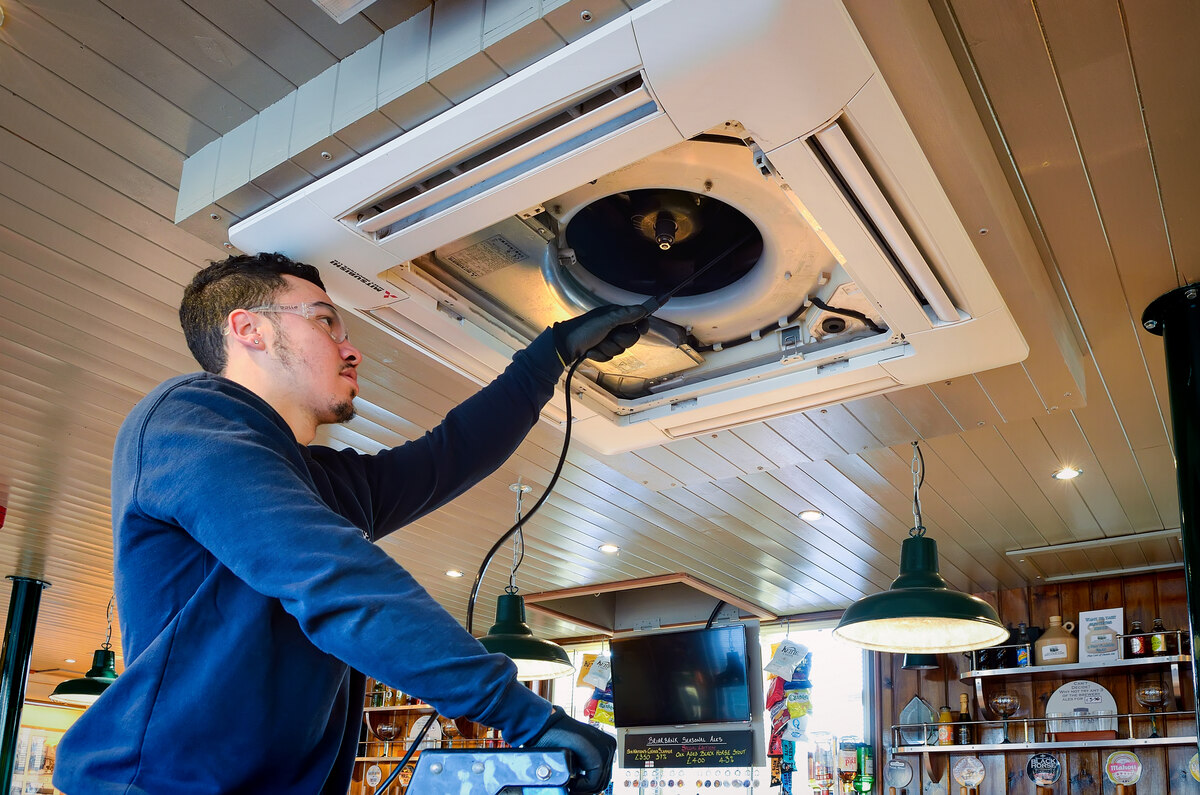Air Conditioning Is Often Referred To As

Air conditioning, often referred to as AC, A/C, or simply air con, is a modern necessity, especially during hot summer months. When your AC unit malfunctions, it can be incredibly frustrating. This article provides a step-by-step troubleshooting guide for common household AC problems, focusing on practical DIY solutions you can attempt safely. However, remember that working with electricity, refrigerant, or complex components can be dangerous and should always be left to qualified professionals. This guide focuses on window units and central air systems, but it is important to remember some systems require a professional.
Common AC Problems and Initial Checks
Before diving into specific fixes, let's outline some typical AC issues:
- AC not turning on at all.
- AC blowing warm air.
- AC making unusual noises.
- AC cycling on and off frequently (short cycling).
- AC leaking water.
- Insufficient cooling.
Safety First! Before you start any troubleshooting, disconnect the AC unit from the power source by unplugging it or turning off the relevant circuit breaker.
Initial Checks: The Obvious Things First
Often, the solution is simple. Start with these easy checks:
- Thermostat Setting: Is the thermostat set to "Cool" and at a temperature lower than the current room temperature? It sounds basic, but it's a common oversight. Ensure the fan is set to "Auto" rather than "On" if you want the AC to cycle with the cooling.
- Power Supply: Check that the AC unit is plugged in securely and that the outlet is working. Test the outlet with another device to confirm. For central AC, check the circuit breaker panel for tripped breakers. Reset any tripped breakers.
- Air Filters: A dirty air filter is the number one cause of AC problems. Dirty filters restrict airflow, causing the AC unit to work harder, cool less efficiently, and even overheat. Replace the air filter regularly (typically every 1-3 months, depending on usage and filter type). A clogged filter can freeze up the evaporator coils.
- Clear Obstructions: Make sure nothing is blocking the airflow to the AC unit, both inside and outside (for central AC units). Remove any furniture, curtains, or debris that might be restricting airflow. For outside units, clear away leaves, grass clippings, or other obstructions.
Troubleshooting: No Power or Unit Not Turning On
If the AC unit isn't turning on at all, follow these steps:
Step 1: Confirm Power to the Unit
- Window Units: Use a multimeter to test the outlet voltage. You should see approximately 120 volts (in North America). If there's no voltage, check the circuit breaker. If the breaker trips immediately after resetting, there could be a short circuit – call a qualified electrician.
- Central AC: Check the main breaker for the AC unit. There may also be a separate disconnect switch near the outdoor unit. Ensure both are in the "On" position. If you're uncomfortable working with electrical panels, contact a professional.
Step 2: Check the Unit's Power Cord (Window Units)
- Inspect the power cord for any signs of damage, such as cuts, frays, or burn marks. If the cord is damaged, do not use the unit. Replace the power cord or consult a qualified technician.
Step 3: Reset the AC Unit (If Applicable)
- Some AC units have a reset button, often located near the power cord. Press and hold the reset button for a few seconds.
Step 4: Control Board Fuse (Advanced - Proceed with Caution)
This step involves opening the AC unit's control panel. Exercise extreme caution and ensure the unit is completely disconnected from the power source. If you're not comfortable with this, call a professional.
- Locate the control board, usually behind the front panel.
- Identify the fuse on the control board.
- Use a multimeter to test the fuse for continuity. If the fuse is blown, replace it with a fuse of the same amperage rating.
Troubleshooting: AC Blowing Warm Air
If the AC unit is running but blowing warm air, consider these possibilities:
Step 1: Check the Air Filter (Again!)
- A dirty air filter is the most common culprit. Replace it immediately. Wait a few hours to see if this resolves the issue.
Step 2: Check for Frozen Evaporator Coils
- What it is: The evaporator coils are located inside the indoor unit (either the window unit or the indoor air handler for central AC). When airflow is restricted (usually due to a dirty filter), the coils can freeze up.
- How to check: Turn off the AC unit and leave the fan running (if possible) for several hours to allow the ice to melt. Do not attempt to manually remove the ice. Inspect the coils for visible ice build-up.
- What to do: Once the ice has melted, replace the air filter and ensure proper airflow. If the coils freeze up again soon after, there may be a more serious problem, such as a refrigerant leak or a faulty blower motor. Contact a qualified technician.
Step 3: Check the Outdoor Unit (Central AC)
- Ensure the outdoor unit is clean and free of debris. Clear away any leaves, grass clippings, or other obstructions that might be blocking airflow.
- Check that the fan on the outdoor unit is running. If the fan is not running, there could be a problem with the fan motor, capacitor, or wiring. This requires professional diagnosis and repair.
Step 4: Refrigerant Leak (Likely a Professional Repair)
- If you suspect a refrigerant leak, do not attempt to handle the refrigerant yourself. Refrigerant is a hazardous substance and requires specialized equipment and training to handle safely. Signs of a refrigerant leak include:
- The AC unit is constantly running but not cooling effectively.
- Ice build-up on the evaporator coils (even after thawing).
- Hissing or bubbling sounds coming from the AC unit.
- Contact a qualified HVAC technician to diagnose and repair the refrigerant leak.
Troubleshooting: Unusual Noises
Unusual noises coming from the AC unit can indicate a variety of problems:
- Rattling: Could be loose screws, debris inside the unit, or a malfunctioning fan. Try tightening any loose screws you can easily access. If the rattling persists, contact a professional.
- Squealing: Could be a worn-out fan belt (in older central AC units) or a failing motor bearing. Replacing a fan belt or motor bearing requires specialized knowledge and tools – call a professional.
- Buzzing: Could be a loose electrical connection, a failing capacitor, or a problem with the compressor. Electrical issues require professional attention.
- Clicking: Can be a normal sound during startup and shutdown. However, constant clicking could indicate a relay problem or other electrical issue. Consult a technician.
Troubleshooting: AC Leaking Water
AC units produce condensation as they cool the air. This condensation should drain properly. If the AC unit is leaking water, here's what to check:
Step 1: Check the Drain Line (Window Units and Central AC)
- Window Units: The drain line is usually a small opening or tube at the back of the unit. Make sure it's not clogged with debris. Use a pipe cleaner or small wire to clear any obstructions.
- Central AC: The drain line is typically a PVC pipe located near the indoor air handler. Check for clogs and clear them using a wet/dry vacuum or a stiff wire. You can also try pouring a cup of vinegar down the drain line to dissolve any mold or algae buildup.
Step 2: Check the Drain Pan (Central AC)
- The drain pan is located under the indoor air handler. Inspect it for cracks or leaks. If the pan is damaged, it will need to be replaced.
- Ensure the drain pan is properly sloped so that water can drain freely.
Step 3: Frozen Evaporator Coils (Again!)
- As mentioned earlier, frozen evaporator coils can cause water to overflow. Follow the steps outlined in the "AC Blowing Warm Air" section to address frozen coils.
Troubleshooting: Short Cycling (Frequent On/Off)
Short cycling is when the AC unit turns on and off frequently, without running for a reasonable amount of time. This can waste energy, reduce cooling efficiency, and shorten the lifespan of the AC unit.
- Dirty Air Filter: (Yes, again!) A restricted air filter is a prime suspect.
- Oversized AC Unit: If the AC unit is too large for the space it's cooling, it will cool the area too quickly and then shut off. This is a more complex issue that may require professional evaluation.
- Refrigerant Issues: Low refrigerant can also cause short cycling. This requires professional diagnosis and repair.
- Electrical Problems: Faulty wiring or a failing capacitor can also cause short cycling. Contact a qualified electrician.
When to Call a Professional
While this guide provides basic troubleshooting steps, some AC problems require professional expertise. Always call a qualified HVAC technician if:
- You are uncomfortable working with electricity or gas.
- You suspect a refrigerant leak.
- You need to repair or replace complex components, such as the compressor, fan motor, or control board.
- You are unable to diagnose the problem after following these troubleshooting steps.
- The AC unit is still under warranty.
By following these steps, you can confidently troubleshoot many common AC problems. Remember to prioritize safety and know your limits. Empower yourself with this knowledge, and you'll be better equipped to keep your home cool and comfortable. Most importantly, always put safety first!









:max_bytes(150000):strip_icc()/what-are-central-air-conditioners-1152645_V2-390c6f1f6ca14b4ebc59426f226a78a8.png)
